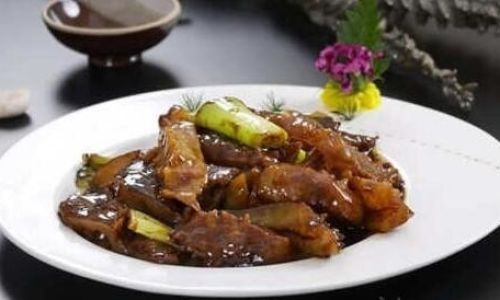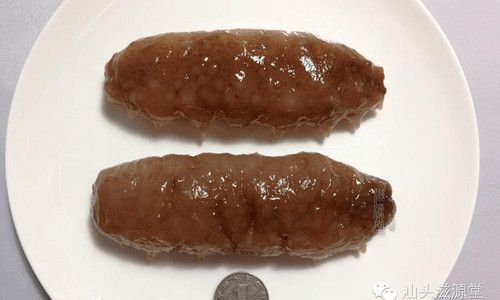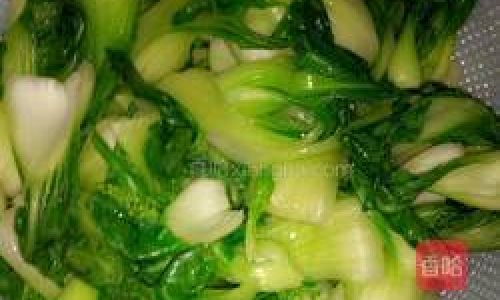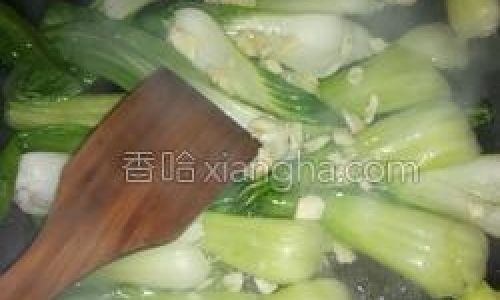Table of content
Sea cucumber, a marine delicacy revered in culinary traditions across Asia, has long been prized for its unique texture and purported health benefits. Though its appearance may seem unassuming—a gelatinous, worm-like creature—its preparation transforms it into a luxurious dish that graces banquet tables and family dinners alike. For home cooks eager to explore this ingredient, mastering the intricacies of cleaning, rehydrating, and cooking sea cucumber is a rewarding journey. This comprehensive guide delves into the history, preparation methods, and time-tested recipes to help you recreate restaurant-quality sea cucumber dishes in your own kitchen.
Chapter 1: Understanding Sea Cucumber
Before diving into recipes, it’s essential to grasp the basics of this intriguing ingredient. Sea cucumbers belong to the class Holothuroidea and are found in oceans worldwide. Over 1,700 species exist, but only a handful are consumed. The most common varieties include:
- Sandfish (Stichopus japonicus): Native to the Pacific, prized for its tender texture.
- Prickly Redfish (Thelenota ananas): Distinguished by its spiky exterior and robust flavor.
- White Teatfish (Holothuria fuscogilva): A larger species often used in high-end cuisine.
Nutritional Profile:
Sea cucumber is low in fat and calories but rich in protein, collagen, and minerals like magnesium and zinc. Traditional medicine systems, including Traditional Chinese Medicine (TCM), attribute it with anti-inflammatory and immune-boosting properties.
Selecting Quality Sea Cucumber:
When purchasing dried sea cucumber (the most common form for home use), look for:
- Size: Larger specimens yield meatier results.
- Color: Avoid overly bleached or discolored pieces.
- Texture: Dried sea cucumber should feel firm, not brittle.
Chapter 2: The Rehydration Process
The most critical step in preparing sea cucumber is rehydration—a multi-day process that revives the dried creature to its plump, edible state. Skipping or rushing this step results in tough, chewy flesh.

Step 1: Initial Cleaning
- Rinse dried sea cucumber under cold water to remove surface debris.
- Place in a large, non-reactive container (glass or ceramic).
Step 2: Soaking
- Cover with pure water (avoid tap water to prevent mineral buildup).
- Soak for 24–48 hours, changing the water every 8–12 hours.
- Pro Tip: Add a few ice cubes during the first soak to slow bacterial growth.
Step 3: Boiling
- After initial soaking, drain the water.
- Transfer sea cucumbers to a pot and cover with fresh water.
- Bring to a gentle simmer (never boil vigorously, as this toughens the flesh).
- Simmer for 30–60 minutes, depending on size.
- Remove from heat and let cool in the cooking liquid.
Step 4: Final Soak
- Once cooled, transfer to a clean container.
- Cover with fresh water and refrigerate for 24–48 hours, changing the water daily.
Step 5: Gutting (Optional)
- For recipes requiring stuffed sea cucumber, slit open the belly and remove internal organs.
- Rinse thoroughly to eliminate grit.
Chapter 3: Essential Cooking Techniques
Sea cucumber’s neutral flavor makes it a versatile canvas for bold seasonings. Master these techniques to elevate your dishes:
Braising (Red Cooking):
- Simmer sea cucumber in a flavorful liquid (soy sauce, star anise, ginger, and rock sugar) until tender.
- Key: Low, slow heat to meld flavors without overcooking.
Stewing:
- Pair with rich ingredients like abalone, chicken, or mushrooms in a broth fortified with oyster sauce.
Stir-Frying:
- Slice rehydrated sea cucumber into strips and toss with vegetables (bok choy, bell peppers) in a hot wok.
Steaming:
- Marinate in garlic, ginger, and sesame oil before steaming to retain moisture.
Chapter 4: Classic Recipes
Recipe 1: Braised Sea Cucumber with Mushrooms
Serves 4–6
Ingredients:
- 8 oz rehydrated sea cucumber, cut into 1-inch pieces
- 1 cup dried shiitake mushrooms, rehydrated and sliced
- 4 cups chicken or vegetable broth
- 3 tbsp soy sauce
- 2 tbsp oyster sauce
- 1 tbsp Shaoxing wine
- 1-inch ginger, sliced
- 3 garlic cloves, smashed
- 1 star anise
- 1 cinnamon stick
- 1 tbsp cornstarch (mixed with 2 tbsp water)
- 2 tbsp cooking oil
- 1 tbsp sesame oil
- 1 tbsp sugar
- Salt to taste
- Chopped scallions for garnish
Instructions:
- Heat cooking oil in a wok over medium heat. Add ginger and garlic; stir-fry until fragrant.
- Add sea cucumber and mushrooms. Toss for 2 minutes.
- Pour in broth, soy sauce, oyster sauce, Shaoxing wine, sugar, star anise, and cinnamon. Bring to a simmer.
- Cover and braise for 45–60 minutes until tender.
- Uncover, increase heat, and thicken with cornstarch slurry.
- Drizzle sesame oil and adjust seasoning. Serve over steamed rice, garnished with scallions.
Recipe 2: Sea Cucumber and Chicken Congee
Serves 6

Ingredients:
- 1 cup jasmine rice, rinsed
- 8 cups chicken broth
- 1 chicken breast, diced
- 4 oz rehydrated sea cucumber, julienned
- 1 tbsp ginger, minced
- 2 tbsp Shaoxing wine
- 1 tbsp light soy sauce
- 1 tsp white pepper
- 2 eggs, beaten
- 1 tbsp sesame oil
- Fried shallots and cilantro for garnish
Instructions:
- In a large pot, combine rice, broth, and ginger. Bring to a boil, then reduce heat to low.
- Simmer for 45 minutes, stirring occasionally to prevent sticking.
- Add chicken, sea cucumber, Shaoxing wine, soy sauce, and white pepper. Cook for 15 minutes.
- Slowly drizzle beaten eggs into the congee while stirring gently to create ribbons.
- Remove from heat. Stir in sesame oil. Serve hot with fried shallots and cilantro.
Recipe 3: Stir-Fried Sea Cucumber with Snow Peas
Serves 4
Ingredients:
- 8 oz rehydrated sea cucumber, sliced
- 1 cup snow peas, trimmed
- 1 red bell pepper, julienned
- 3 garlic cloves, minced
- 1 tbsp fermented black beans, rinsed
- 1 tbsp soy sauce
- 1 tsp sugar
- 1 tsp cornstarch (mixed with 1 tbsp water)
- 2 tbsp cooking oil
- 1 tsp sesame oil
Instructions:
- Blanch snow peas and bell peppers in boiling water for 1 minute. Drain and set aside.
- Heat oil in a wok over high heat. Add garlic and black beans; stir-fry for 30 seconds.
- Add sea cucumber and stir-fry for 2 minutes.
- Toss in vegetables, soy sauce, and sugar. Stir-fry for 2 minutes.
- Thicken with cornstarch slurry. Drizzle sesame oil before serving.
Chapter 5: Advanced Techniques and Tips
Achieving the Perfect Texture:
- Overcooking turns sea cucumber mushy; undercooking leaves it rubbery. Test doneness by piercing with a chopstick—it should yield slightly.
Flavor Pairings:
- Umami-rich ingredients (dried scallops, ham) enhance sea cucumber’s mild taste.
- Avoid acidic ingredients (vinegar, citrus) during cooking, as they toughen the flesh.
Storage:
- Rehydrated sea cucumber can be refrigerated in water for 3–4 days or frozen for up to 3 months.
Troubleshooting:
- Slimy texture? Soak in salted water for 30 minutes before cooking.
- Foul odor? Add a slice of ginger to the cooking liquid.
Chapter 6: Cultural Significance
Sea cucumber has been a symbol of luxury in Chinese cuisine for centuries. During the Ming Dynasty, it was reserved for imperial banquets. Today, it remains a coveted ingredient during Lunar New Year celebrations, symbolizing prosperity and good health. In Fujian and Guangdong provinces, elaborate preparations like Fo Tieng Peng (Buddha Jumps Over the Wall) feature sea cucumber alongside abalone and shark fin.
Chapter 7: Sustainability and Ethical Considerations
Overharvesting has depleted wild sea cucumber populations in some regions. Opt for farmed varieties certified by organizations like the Aquaculture Stewardship Council (ASC). Avoid species listed as vulnerable by the IUCN Red List, such as the White Teatfish.
Conclusion
Preparing sea cucumber at home is a labor of love, but the results—silken, flavorful dishes steeped in tradition—are well worth the effort. By mastering rehydration techniques and experimenting with classic recipes, you can elevate this humble ingredient into a centerpiece of your culinary repertoire. Whether braised, stir-fried, or simmered in congee, sea cucumber offers a gateway to exploring the depths of global gastronomy.
Final Tip: Invite friends and family to share your creation—sea cucumber’s rich history and texture make it a conversation starter as much as a meal. Bon appétit!




0 comments